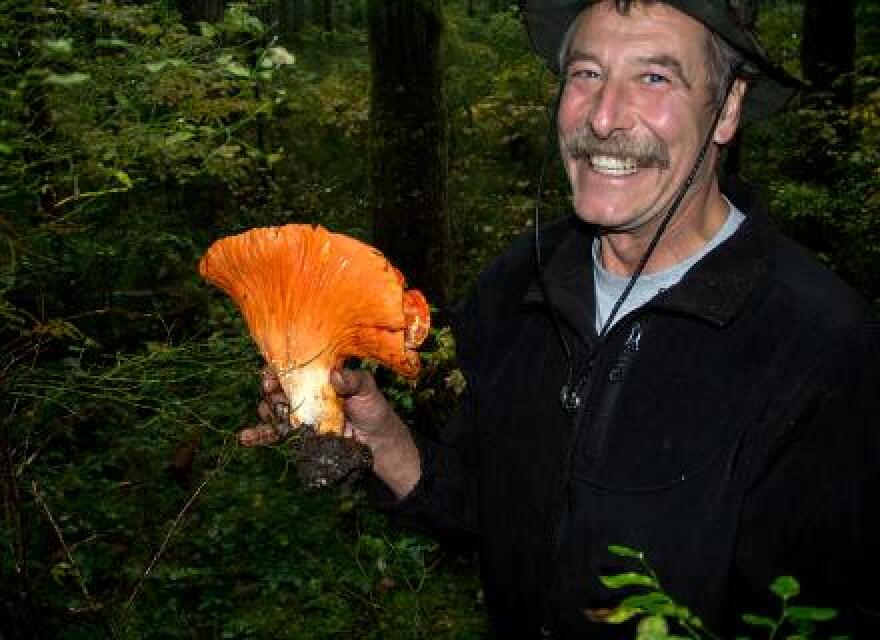Wild mushrooms are going gangbusters this year in the Pacific Northwest, thanks to just the right weather conditions, and foragers are rejoicing afterlast year’s shortage.
Among them is James Nowak, an amateur mycologist who spends most of his days working with mushrooms. When he’s not out in a forest hunting for mushrooms, he grows them in his lab in Seattle or processes them for sale to restaurants and home cooks.
Just last week, he says he came back from a foray with a 30-pound haul of wild chanterelles.
“Probably if they were dry, it would have been more like 20 pounds. But yeah, it was a huge amount of mushrooms," Nowak said, laughing. "This is such a fantastic year. There are so many mushrooms out there."
The rain is a big part of what has helped create the bumper crop. But earlier this year, Nowak says it seemed we were in for another disappointing fall season.
“I was really concerned in the summertime. We were having those long stretches of hot days. But we really didn’t have that extreme hot weather. Then we got some good rainfall, too, and now we’re getting quite a bit of rain," he said. All that rain bodes well, says the forager. "If we can just stave off a hard freeze for as long as possible, then the season should go on until probably into December.”
Along with chanterelles, Nowak knows where to find just about every coveted edible mushroom you could want. And he likes to teach people his secrets through his company,TerraFleurs.
“And it’s so much fun, to see the expression on people’s faces—big happy smiles when they find mushrooms, it’s very satisfying," Nowak said."It’s a great thing to do. And it’s nice to expose people to that.”
Bushwacking near North Bend in the woods of Rattlesnake Lake Recreation area, Nowak scans the rich dark soil on the forest floor. He’s looking for the telltale sign of lobster mushrooms: a pea-sized hint of red poking through the underbrush.

He pulls out the mother lode: a huge, bright-red, funnel-shaped lobster mushroom. Its ruffled edges span nearly 12 inches.
"Is this unbelievable?" he exclaims. "Oh my God, look at how big it is. Is that just too crazy?" The mushroom, he quips, is enough to feed "a family of five, for two days.”
In addition to this giant lobster and many of its cousins, we bring home baskets full of porcini and chanterelles, as well as a few gypsy mushrooms and puffballs. And along with this bounty, he offers tips on what’s safe to eat and what’s not.
“Any mushroom with spots on it is normally toxic, if not deadly,” he said. And he warns never to take chances. If you're not 110 percent certain it's safe, you should never eat a wild mushroom.
Learn James Nowak's tips on mushroom foraging on our companion site, Quirksee.org >>>







